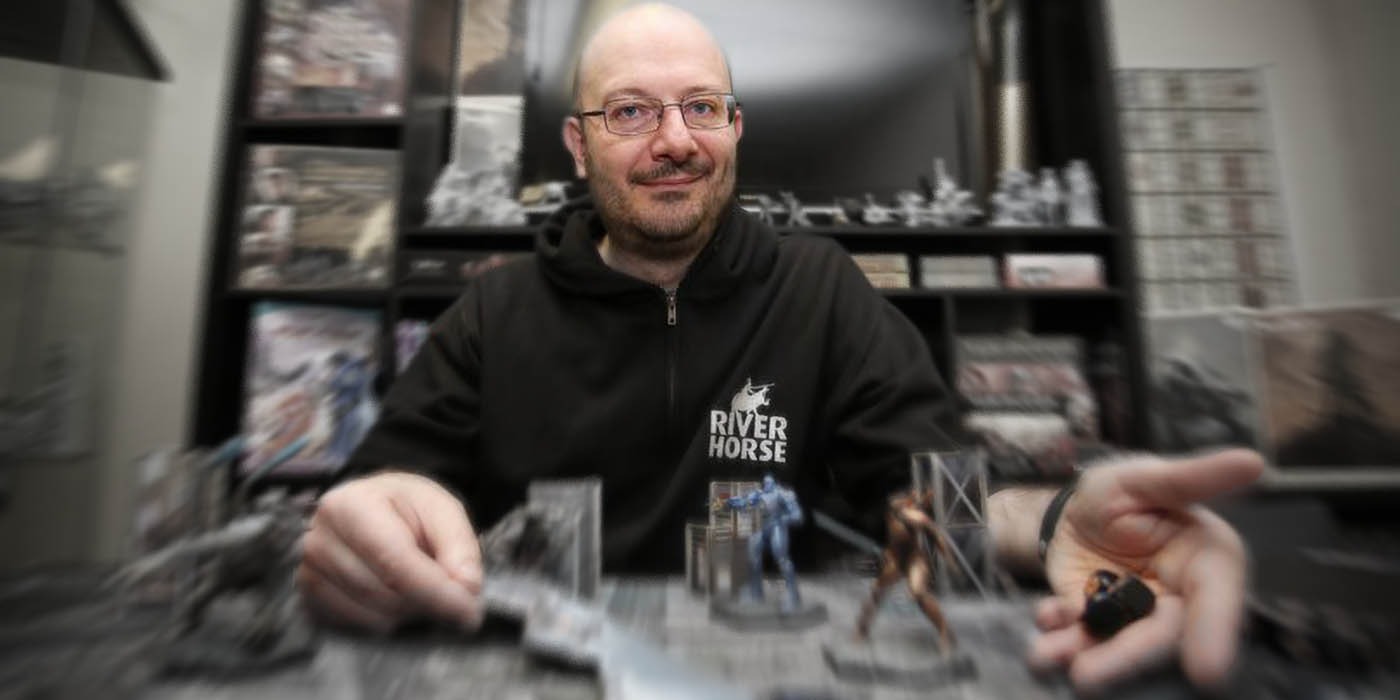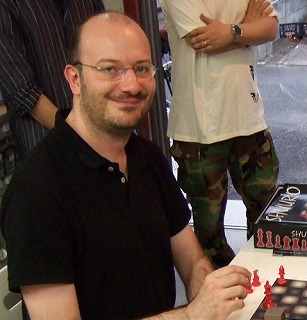INTERVIEW: Alessio Cavatore on GameDesign

Today BoLS is very pleased to bring you an interview with Alessio Cavatore. He is the credited author of Warhammer 40,000 5th edition, and I am delighted to have to opportunity to bring you all some of his thoughts on game design. Let’s get to it.
You could say that it was when I’ve written my own rules to play with WWII HO-scale toy soldiers on the floor of my room when I was twelve years old or so… it helped that the parquet had a checkered motive! They were very simple rules, but did the trick. If I ever were to write a WWII rules system now, I would definitely try to include some of them… or at least their very simple and intuitive core principles.
But if you talk about material that has actually been published, it is with the Vampire Counts for fourth edition Warhammer Fantasy Battle, under the watchful eye of Tuomas Pirinen.
The difference is immense! On the one side, when writing for a well-established system like the GW ones, one has no real freedom and must adhere to a complex set of instructions and unwritten laws and restrictions. These limits do however have the great advantage that they give you a frame of reference within which to work, making the process somehow easier, at least in my experience. It has to be said that the process was made very much easier for me by the help of kind and very open senior colleagues, like the aforementioned Tuomas, but most especially Rick Priestley and Jervis Johnson. Thanks guys!
Designing something from scratch, on the other hand, gives you a lot more freedom, making it really exciting and allowing you to really ‘own’ a system. All of this freedom, however, is also quite terrifying, as there are so many choices to make, so many venues one decides not to explore… it can be paralysing!
The miniatures. And the background. Most definitely it’s all about the toy soldiers and the background they represent. The rules must try to represent as closely as possible the background and fit the models. After that they should ideally disappear in the background, like ambient music – it’s still there and it improves the overall experience, but your brain almost does not register it’s there at all!
And of course to occasionally have an element of rules that is slightly more ‘heavy’ and entertaining is also fine, but I think one should not overdo it. No rules for rules’ sake!
In case it did not transpire already from the answers above, the mantra that I’ve been repeating for the last few years is ‘simplicity, simplicity, simplicity’. I think that less is definitely more, as I have one too many times seen a game degenerate or get bogged down because of overwritten, hyper-detailed rules. Better to leave that to computers and keep it simple in ‘analogue’ gaming!
I think it’s that attempt to write the ‘perfect rule system’ for tridimensional wargaming. I myself started my career in search of that Holy Grail of crystal clear and detailed rules alongside perfectly balanced armies. I have now, in a Zen-like process of growth, reached the enlightened state where you realise that there are no such things. They are illusion, an ideal to aspire to and strive towards, in the knowledge of never being able to reach it. Wow that was very philosophical…
Ooohhh, I don’t really know which to chose… but I can quote a few I am proud of, in chronological order:
- the mechanic for firing the Ratling Gun… simple and at the same time teasing and playing with your mind… greed versus caution.
- the gaudy and non-sense feeling captured by the absurd rules for Tom Bombadil and Goldberry.
- true ‘true’ line of sight in fifth edition 40K… it really brings the game to life for me.
- the mystical symmetricity of the Turanga board and the way the plinths disposition rules mechanic seemed to flow ‘naturally’ from Shuuro to Turanga. Almost spooky, but I’m sure it must have something to do with numerology and the masonic ‘square stone’.
- the turn structure of Kings of War that allows the true use of chess-clocks for the first time in wargaming history (as far as I know, I should add).
- in general, the fact that Kings of War works as nicely as it does with so few rules. Every time I play it I’m surprised by this… very pleasantly surprised.
And bizarrely, as I write these, I’m thinking that they can all be improved upon… I guess it’s in the nature of us games designers…
Oh dear, another very difficult one to pinpoint. I guess the Skaven are very difficult because they have so many units with wacky base-sizes, and even mixed troop types with bases of odd shapes. Quite a nightmare. I also felt that writing army lists for a new system (Kings of War) is very daunting, as you know that you are going to get it wrong, no matter what. It’s that lack of battlefield experience! One should hope to get them reasonably balanced in their first edition and then use the feedback from the public and one’s own growing experience to fine tune them. I guess keeping things simple, thus reducing the number of variables, helps a great deal.
It’s a tough one between 40K fifth ed. and Kings of War. I guess it’s difficult to compare a veritable giant (the most popular wargame in the world…), with a fresh newborn (but the new baby shows promise!).
40K because it brings its fantastic background to life in a very entertaining way, and Kings of War because it challenges the mind in a new and very interesting way.
I love BloodBowl, a masterful cross-pollination of wargaming and boardgaming. I love the spirit behind the rules of Blackpowder and the amazingly witty tone Rick writes in.
I’ll answer this with a quote that Jervis is very fond of, by one of the greatest writers that ever lived, Antoine de Saint-Exupery:
“Perfection is achieved, not when there is nothing more to add, but when there is nothing left to take away!”
I guess my view slightly differs from the author of the Little Prince because I feel that perfection is never achieved, but the quest for it should continue nevertheless, because it is the journey itself that matters!
Alessio Cavatore
After studying biology at Turin’s university, Alessio Cavatore has moved to the UK at age 25 to work as a translator for Games Workshop. One year later he became a games developer, and has continued to do that job for the last fifteen years. For Games Workshop he has worked on several game systems and supplements, like Warhammer Fantasy Battle, Warhammer 40,000 and the Lord of the Rings Strategy Battle Game. He is now the managing director of the company he co-founded River Horse Ltd , in order to publish games of his own making. The first one is Shuuro, the game of creative chess, Soon followed by its four-player expansion Turanga. He also hires his games-design skills as a consultant for many gaming companies out there, like Mantic (for which he has written Kings of War) and Warlord Games.


